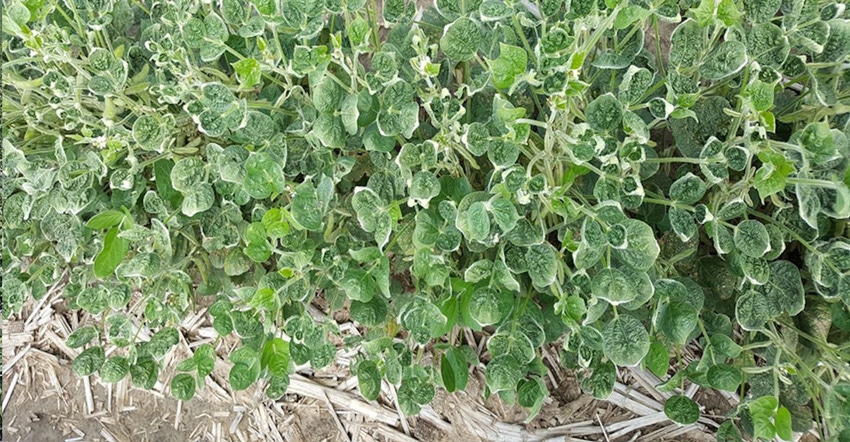
This year, nearly 50,000 acres of soybeans in Nebraska and 3.6 million acres nationally saw symptoms of dicamba injury. Many reports have pinpointed volatility as the primary culprit, but Greg Kruger, University of Nebraska-Lincoln associate professor and Extension weed science and application technology specialist notes drift and tank-contamination may be causing more problems than they are getting credit for.
With different chemistries and nozzle setups, there are different deposition curves. For many products, this means differences in the amount of visible drift injury at different distances from the area of application area.
With low-drift nozzles, there isn't a substantial change in deposition starting from a short distances from the application area and going out a considerable distance.
"The better we are at reducing drift, the quicker the deposition curve drops to a very low level that's much more constant across a longer distance," explains Kruger. "The amount of drift we have depositing at different distances is more similar when we use low-drift techniques."
Meanwhile, soybeans are extremely sensitive to dicamba – more sensitive as grapes. According to University of Georgia research at Tifton, Ga., soybeans, when not tolerant to dicamba, are among the most sensitive to dicamba injury – showing symptoms at as little as 1/800 of the labeled rate of application. When there is a wide range of doses that cause similar symptomology, injury many look similar across a large field despite the fact that the soybeans at different places in the field may have been exposed to different doses of dicamba.
And that may be why volatility was blamed as the cause of dicamba injury in so many cases, Kruger says.
"A wide range in drift level rates creates a very similar symptomology," he says. "I could look across a field and say 'it's uniform.' The symptomology may be uniform, but that doesn't mean the deposition necessarily was uniform."
If those extremely low rates are enough to cause cupping in soybeans, Kruger adds it also doesn't leave a lot of room for error in tank cleanout either.
"That's especially true if the contamination source is something other than the sprayer," he adds. "If somebody's running a tender truck contaminated with dicamba or using hoses or pump lines contaminated with dicamba, then you could start to get multiple sprayer tank loads that are contaminated."
Drift is typically measured in grams per hectare, while volatility is measured in nanograms per cubic meter – several orders of magnitude smaller. And that may also help to explain what is happening in some cases, Kruger says.
"It's a significantly smaller amount of product we're dealing with," he says. "That's not to say volatility isn't important, but the total fraction that can move due to volatility is smaller than that of particle drift."
"You see cupped plants, leaf tips curled up. I think a lot of people have a trained eye for what dicamba looks like now," Kruger adds. "My guess is in the past, there was a lot more damage from dicamba than what people realize. It wasn't recognized because it didn't have the spotlight on it."
That's why he says dicamba injury may be a wicked problem – one that has an incomplete solution and is complicated to solve.
"I think it's one of those problems, because it's much more complicated than what people want to give it credit for," he says. "Many people want to identify one factor that's causing dicamba injury. It's not that simple. There are lots of factors at play here."
About the Author(s)
You May Also Like






